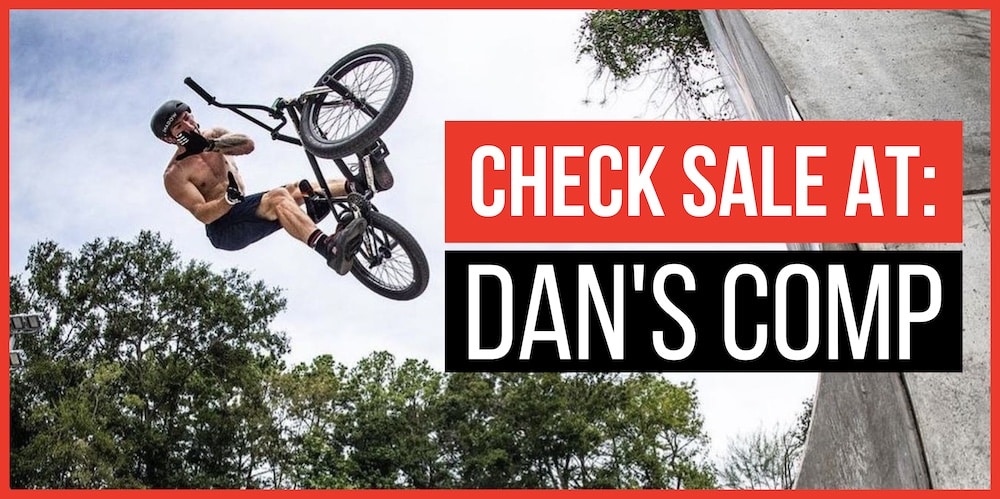Are you in to get a new sprocket and wonder, “Will the sprocket fit my BMX bike?”
Before getting a new one, please read this article so you don’t make any unnecessary mistakes.
Luckily, most modern sprockets fit most modern BMX bikes, but that’s not always the case.
You want to look at spindle size, drive type, frame clearance, chain compatibility, and (optional) tooth count.
Each of these plays a part in ensuring your sprocket fits snugly on your bike and works as it should.
In this guide, I’ll break down each factor to ensure that you end up with a sprocket that perfectly fits your bike and riding style.
And at the bottom, you can also find more topics to help you geek out on BMX sprockets.
Key Factors To Consider When Choosing A BMX Sprocket
1. Spindle Size Compatibility

I find it pretty embarrassing to bring this one out publicly, but it is what it is.
So, I once ordered a sprocket with a 19mm bore, only to later find that my crank spindle is 22mm.
Luckily, I didn’t scratch the sprocket, it was exactly as I got it, so returned it.
That’s why I’m bringing this one first because it’s crucial.
Always measure your crank spindle before getting a sprocket to ensure it’ll fit.
Nowadays, crank spindles are 19mm, 22mm, or 24mm.
In many cases, the sprocket will have a 24mm bore and then include adapters for the 19mm and 22mm spindles.
However, please read the description when it comes to cheaper BMX sprockets – because not all include adapters.
2. Bolt Drive Vs. Spline Drive

Figure out if your crank setup is bolt-drive (which uses a bolt to secure the sprocket) or spline-drive (which slides directly onto a splined spindle).
It’s very easy to spot a bolt or spline drive sprocket, but, hey, we’re only humans, so can make mistakes.

However, it’s pretty hard to find spline drive sprockets these days, so wherever you look, likely, they’ll only have bolt drive variations.
It’s the most convenient.
But if you’re interested in knowing more about the two attachment styles, this article covers the pros and cons of both in great detail.
3. Sprocket Tooth Count

Okay, this one might not necessarily impact the compatibility, but I think it’s still worth mentioning.
The only thing that might not be compatible is the chain length if you get a larger or a smaller sprocket size.
Anyway, to ensure that the new sprocket you’re getting fits your bike and your riding style, always check for the tooth count.
Smaller tooth counts (25T or 28T) are common for freestyle BMX setups.
However, 30T and 33T options are also quite common for trails and transition riders.
Further reading: What BMX Sprocket size is best?
4. Frame Clearance

Ensure the sprocket will clear your frame, especially if you’re running a larger size or a different style from what you currently have.
It shouldn’t rub against your chainstay.
This was especially important with older frames – or still is for those building an old-school BMX.
But for modern frames and sprockets, you almost don’t have to worry about it because every sprocket fits every bike.
Still, if you find your sprocket too close to the frame (another mistake I made once) – or you have issues with chain alignment – then use the spacers that come with cranks (the thin ones) and adjust the sprocket position accordingly.
5. Chain Compatibility

This one goes particularly to all the riders out there who run half link chains.
It’s best to check that the sprocket teeth are compatible with this type of chain.
Don’t get me wrong, all modern full and half link chains fit all modern BMX sprockets, but half links can “eat” sprocket teeth faster than full links.
Be sure to check compatibility so you won’t have to change the sprocket too soon.
Also, if your chain is stretched out, it will hurt your sprocket teeth.
Conclusion: Make That Sprocket Fit Your Bike!
If you found a sprocket that looks super awesome, that’s great!
But do you know if it will fit your BMX bike?
Before you open your wallet, ensure everything fits perfectly so you get the best ride possible.
Taking a few minutes to measure and double-check those specs will help avoid inconvenience, like getting a sprocket with a 19mm bore for a 22mm crank spindle.
Yes, you’re welcome to laugh at me.
I recommend this: Don’t rush it!
Get the right sprocket that fits your bike and riding style, and enjoy every session to the fullest!
FAQs About Sprocket Compatibility
Can I use a mountain bike sprocket on my BMX?
Generally, no. Mountain bike sprockets are usually designed for different crank sizes and chain types, so they’re unlikely to fit properly or hold up under BMX riding demands.
How do I know if a sprocket is bolt-drive or spline-drive?
Look at how your current sprocket attaches to the crank. If it uses a single bolt, it’s bolt-drive. If it slides directly onto the spindle with notches (splines), it’s a spline drive.
What’s the benefit of a smaller vs. larger sprocket?
A smaller sprocket (like 25T or 28T) is lighter and common for street riding since it won’t catch on rails and ledges as easily. Larger sprockets (30T+ or more) are great for speed, flow and transition riding.
Further reading:
- Best 25T BMX sprockets
- Best 28T BMX sprockets
- Best 30T BMX sprockets
- Best 33T BMX sprockets
- BMX sprocket maintenance (6 tips!)






